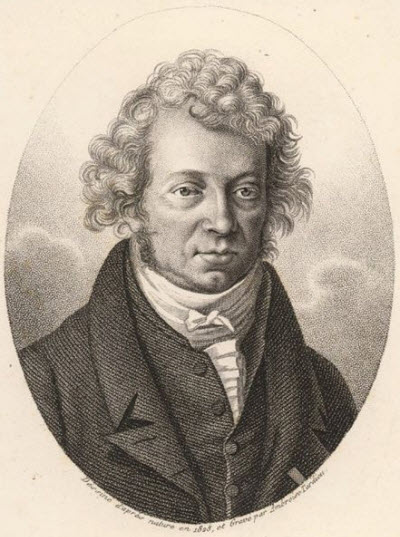
Goodness gracious, who’s that dude with the big ol’ curly coiffure?! It’s André-Marie Ampère! HAPPY BELATED BIRTHDAY, mang!
Now if you had crazy hair like that and a January birthday and lived from 20 January 1775 to 10 June 1836 (his birthday was yesterday), wouldn’t you think that when you woke up each morning, you’d be like “oh yeah kids, it’s time to discover something related to electricity” and then jump straight up in the air?
Yeah. That’s what I would do. First though, I’d need some gel for my hair.
Andr̩ my man here is THE GUY who we can thank for the SI unit of ampere Рsee the relation to his last name? Andr̩ figured out that an electrical current produces a magnetic field, and also figured out what the magnitude and direction of a magnetic field induced by electric current. His studies were monumental in the field and theories of electrodynamics (electromagnetism), and his work is awesome.
Okay, now what the heck is André’s amperage deal, right? In my head, it is best understood by a river full of water. Amperage (A, or amps, amperes – remember the SI rules for capitalization and naming) is technically the amount of electrons flowing past a point in a conductor for one second. The conductor in this case of the river would be our river bed -it can be just a little narrow river or stream, or it can be like the Nile river or Mississippi – huge and wide and strong. The width of the river bed is really the resistance of it – the more surface we have in the bed of the river, the more electrons will flow down the river at a point in time at one measured place. Current, however, is constant. Make sense?
The really confusing thing to folks just starting to learn about amps and electricity is the idea of voltage, or electrical pressure. If we have our river coming from a lake that is way up in the Rocky Mountains and the river connects with the bottom of that mountain of several thousand feet difference, you can imagine that the rate of flow (or current, amps) is extremely strong because there is a lot of force pushing the water down the river. But, if I have that same big lake and a river that are on relatively the same vertical level (both in the Plains, for example) then the amount of water flowing down the river will not be a strong because there is less pressure.
So – the slope of the river is its voltage or pressure, the amount of water that flows past a point in the river at a given time is the current or amperage, and the width of the riverbed is the resistance. Get it? Got it. Faaaaantastic.
You’re not gonna see André at Starbucks because he went to that big mathematics and physics lab in the sky in the mid-1800’s. But – if for some reason you do, ask him if he’d mind talking to me for a podcast. That would rock!
Happy birthday André-Marie Ampère, you crazy dead French mathematician and physicist!
Thanks 1PC, Wikipedia, and Hyperphysics!






